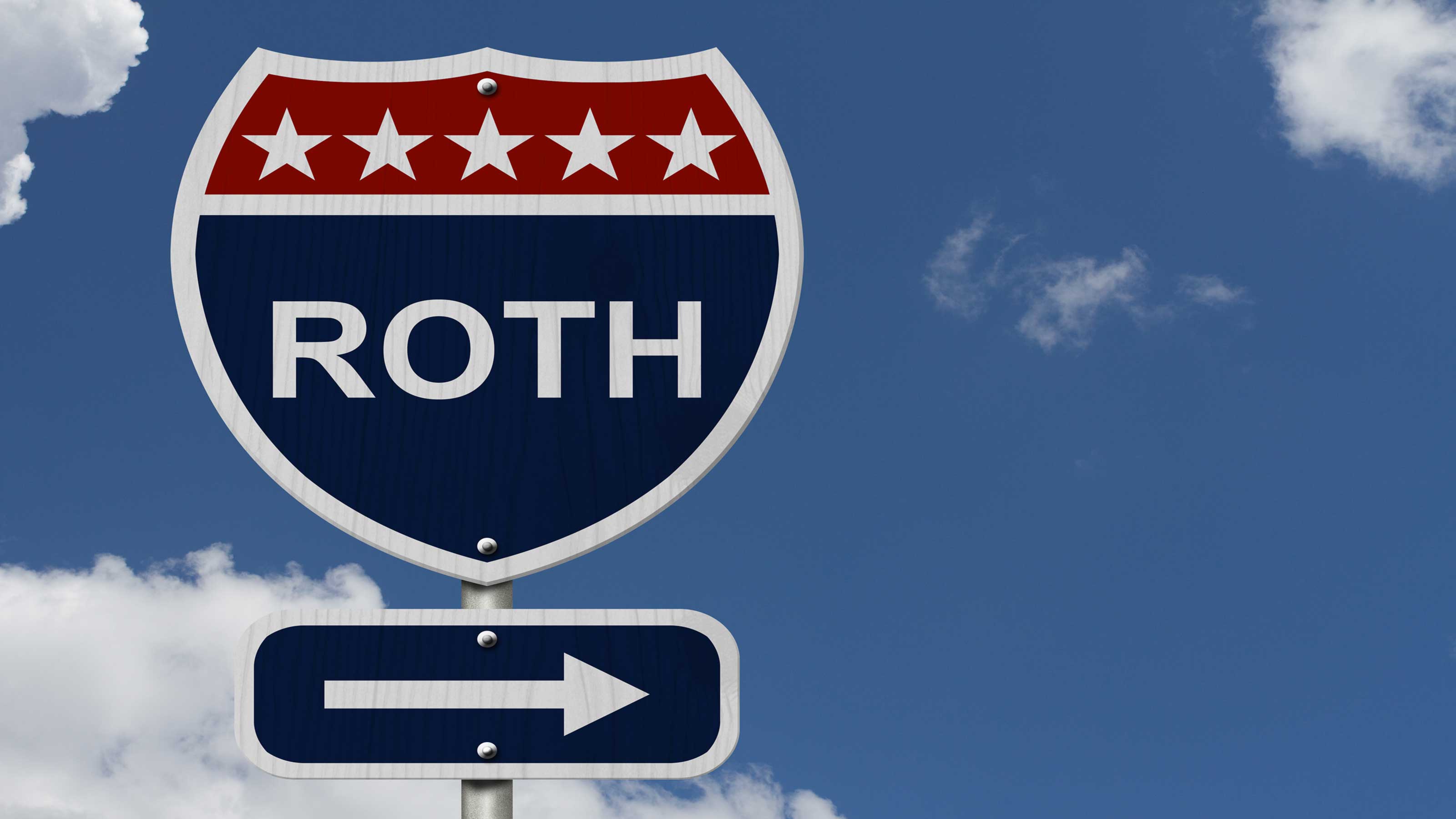Why You Need a Roth IRA
With this indispensable savings tool, your money grows tax-free, you can invest in almost anything and you get several cool perks.

One of the smartest money moves a young person can make is to invest in a Roth IRA — and setting one up is easy.
Follow the rules, and any money you put into one of these retirement-savings accounts grows absolutely tax free: You won't owe Uncle Sam a dime as you let your savings accumulate, or when you cash out in retirement. Plus, an IRA is more flexible than a 401(k) and other retirement plans because you can invest it in almost whatever you want, from stocks and mutual funds to bonds and real estate.
If you haven't yet opened this gift from Uncle Sam, do it now. You have until your tax return deadline to set up and make contributions for the previous tax year. The government sets a limit on how much you can contribute to a Roth. The limit is $6,000 for 2021 ($7,000 for people age 50 and older). And, although you have until next year's tax deadline to kick in your 2021 contribution, the sooner your money is in the tax shelter, the sooner the tax-free earnings begin to accrue.
From just $107.88 $24.99 for Kiplinger Personal Finance
Become a smarter, better informed investor. Subscribe from just $107.88 $24.99, plus get up to 4 Special Issues

Sign up for Kiplinger’s Free Newsletters
Profit and prosper with the best of expert advice on investing, taxes, retirement, personal finance and more - straight to your e-mail.
Profit and prosper with the best of expert advice - straight to your e-mail.
Tax Advantages of Roth IRAs
For those just starting out, the power of this tax shelter may seem a tad obscure, but it can really pay off big. If a 25-year-old contributes $5,000 each year until she retires and makes an average annual return of 8% on her investment, she'll have over $1.6 million saved by the time she retires at age 67. And the money is all hers — she won't have to give the IRS a cent of it if she waits until retirement to withdraw the earnings.
If that same 25-year-old invested that same $5,000 a year in a taxable account earning the same 8% return, she'd have less than $1 million when she turned 67 if her earnings were taxed at 22% each year. That's more than one-third less money than if she'd gone with the Roth. If state taxes bit into the earnings each year, too, she'd be down even more.
Rules for Roth IRAs
As with any government gift, the Roth IRA comes with a few strings attached. First, you can contribute to a Roth only if you have earned income from a job. Say you're in school, you're not working, and you have a little extra money left over from your student loan or your parents gave you money. You cannot put it in a Roth. Also, you cannot save more than you made. So, if you worked a summer job and made only $3,000, the most you could contribute to a Roth would be $3,000.
It's also possible to make too much. For 2021, you can contribute the full $6,000 as long as your income falls below $125,000 if you're single, and $198,000 if you're married filing a joint tax return. The contribution limit is then phased out incrementally if you make between $125,000 and $140,000 (single) or $198,000 and $208,000 (married-joint). (See IRS Publication 590-A for more on calculating your contribution.) Those income limits go up each year, but if sometime in the future your income breaks through the ceiling, don't worry. You won't have to liquidate your Roth; you'll just be prevented from making additional contributions.
Additional Perks of Roth IRAs
If the savings power, flexibility, and tax-free status aren't enough to persuade you of the Roth's virtues, Uncle Sam throws in a few extra perks, making the Roth an indispensable tool in a young adult's financial life.
You can take money out in a pinch. Although the purpose of a Roth is to save for retirement, and your money can grow only if you leave it in the account, you can withdraw your contributions at any time, tax free and without penalty. Of course, it's best to leave your money in the account so you can earn more money, and you really should have a separate emergency fund on standby, but it's nice to know the Roth is there for you if you need it.
Notice we said you can take out your contributions at any time — not your earnings. If you withdraw any of your earnings before age 59½, you'll trigger a tax bill on the money, plus you'll have to pay a 10% penalty. Ouch! On the bright side, the way the IRS looks at things, the first money that comes out of a Roth is your contributions. So it's tax and penalty free. Only after you've drained the account of every penny you have contributed do you begin to dip into earnings and have to worry about taxes and penalties.
You can tap your Roth to buy your first home. As noted, you can always withdraw contributions tax- and penalty-free for any purpose. And, if you tap your Roth for a first-home purchase, in addition to using your contributions for the down payment, you can also withdraw up to $10,000 of earnings tax- and penalty-free if the account has been open for at least five years. Even if you fail the five-year test, the withdrawal will still be penalty-free, but you will have to pay tax on the withdrawn earnings. That $10,000 limit is per person, so couples could withdraw up to $20,000 of earnings if they each have a Roth.
You can dip into your savings after the birth or adoption of a child. Having a baby or adopting a child? You can take out up to $5,000 in earnings from a Roth IRA (or other retirement account) following the birth or adoption of a child without paying the usual 10% early-withdrawal penalty. (You'll still owe income tax on any distribution of Roth earnings, though, unless you repay the funds.) If you're married, each spouse can withdraw $5,000 from his or her own account, penalty-free. You have one year from the date your child is born or the adoption is finalized to withdraw the funds without paying the penalty. You can also put the earnings back into your Roth IRA at a later date. Recontributed amounts are treated as a rollover and not included in taxable income.
You can use it to save for a child’s education. Many new parents don't know whether to save for retirement or the baby's college tuition. Hands down, retirement wins. There are lots of ways to borrow to finance a college education; for retirement, not so much. But starting a Roth is a great way to cover both bases, just in case. Focus on your retirement now, saving as much into a Roth as you can. And as your finances allow, consider opening a specific college-savings account for the new baby — say, a Coverdell or 529 plan. Then, when the day comes for Junior to head off to school, you can assess whether you can afford to — or need to — sacrifice some of your retirement dollars to make it happen.
You can, of course, take out your contributions at any time to help pay the bill. If you dip into earnings before age 59½ (or before the account has been open for five years), you'll owe taxes — but you don't have to pay the 10% early-withdrawal penalty if you use the money for college. The Roth shouldn't be used as the sole savings vehicle for higher education, but it's nice to know you can use it if you need it.
You may qualify for a tax credit. To encourage more retirement saving, Uncle Sam gives lower- and middle-income people up to $1,000 ($2,000 for joint filers) just for contributing to a Roth IRA or other retirement account. You'll get that payment in the form of a tax credit known as the Saver's Credit. For 2021, single filers with adjusted gross income of $33,000 or less may be eligible. Married couples filing jointly must have an AGI of $66,000 or less. The credit is equal to 10%, 20% or 50% of the first $2,000 ($4,000 for joint filers) you contribute to a retirement account. The lower your income, the higher the percentage you get back as a tax credit.
How to Open a Roth IRA
When you're just starting to invest, the Roth should be your first stop — even before you open a regular, taxable account, or contribute to a workplace retirement-savings plan. The only exception is if your employer offers a match on your 401(k) contributions. That's free money you don't want to pass up. In that case, contribute enough to win the match, then send any extra money into a Roth IRA. (Yes, you can invest in both a Roth and a workplace retirement plan.)
You can invest your Roth IRA in almost anything — stocks, bonds, mutual funds, CDs or even real estate. It's easy to open an account. If you want to invest in stocks, go with a discount broker. For mutual funds, go with a fund company. For CDs or money-market accounts, you can go through your bank.
If you're young, you'll want to invest in the stock market to get the highest returns over time. Rookie investors should stick to mutual funds that invest in stocks. They're easy to understand, you leave the stock-picking to the pros, and they make it easy to spread your risk around several stocks or bonds without putting all your eggs in one basket.
Most mutual fund companies even lower their minimum investment requirements when you invest through an IRA. Use our Mutual Fund Finder to search for top-performing mutual funds in 12 different categories. Stick to no-load funds with low expense ratios. Many fund companies will let you open an account and make contributions online. Make sure you designate what year the contributions are for.
Not sure where to find the money to fund your account? Consider investing your tax refund. For the 2021 tax-filing season, the average refund was about $2,800. If you haven’t spent your stimulus funds yet, consider using that to start a Roth.
Another way to fund your account is to put it on autopilot. Most banks and brokers will allow you to set up an automatic investment plan taking the money directly out of your bank account and putting it into your Roth. It's much easier to find the cash when it's considered already gone than if you have to make a physical effort to write the check each month.
Profit and prosper with the best of Kiplinger's advice on investing, taxes, retirement, personal finance and much more. Delivered daily. Enter your email in the box and click Sign Me Up.
Rocky Mengle was a Senior Tax Editor for Kiplinger from October 2018 to January 2023 with more than 20 years of experience covering federal and state tax developments. Before coming to Kiplinger, Rocky worked for Wolters Kluwer Tax & Accounting, and Kleinrock Publishing, where he provided breaking news and guidance for CPAs, tax attorneys, and other tax professionals. He has also been quoted as an expert by USA Today, Forbes, U.S. News & World Report, Reuters, Accounting Today, and other media outlets. Rocky holds a law degree from the University of Connecticut and a B.A. in History from Salisbury University.
-
 Key State Tax Changes to Know for 2026
Key State Tax Changes to Know for 2026Tax Changes As 2026 begins, taxpayers across the country are navigating a new round of state tax changes.
-
 Who Said That? Match the US President to the Quotation
Who Said That? Match the US President to the QuotationWho better to give advice on aging, retirement and finances than a U.S. president? Our short quiz will determine whether you're a history buff or buffoon.
-
 When Do W-2s Arrive? 2026 Deadline and 'Big Beautiful Bill' Changes
When Do W-2s Arrive? 2026 Deadline and 'Big Beautiful Bill' ChangesTax Deadlines Mark your calendar: Feb 2 is the big W-2 release date. Here’s the delivery scoop and what the Trump tax changes might mean for your taxes.
-
 What Does Medicare Not Cover? Eight Things You Should Know
What Does Medicare Not Cover? Eight Things You Should KnowMedicare Part A and Part B leave gaps in your healthcare coverage. But Medicare Advantage has problems, too.
-
 Bond Basics: Treasuries
Bond Basics: Treasuriesinvesting Understand the different types of U.S. treasuries and how they work.
-
 Bond Basics: Pick Your Type
Bond Basics: Pick Your Typeinvesting Bonds offer a variety of ways to grow wealth and fortify your portfolio. Learn about the types of bonds and how they work.
-
 What to Do With Money in a Former Employer’s 401(k)
What to Do With Money in a Former Employer’s 401(k)Basics Leave it behind, move it to your new job’s plan, or roll it over to an IRA. Each of the options has pros and cons.
-
 The FIRE Movement Is Alive and Well
The FIRE Movement Is Alive and WellBasics The pandemic didn’t derail the Financial Independence, Retire Early movement. In fact, it gave it new life.
-
 Should You Invest in Crypto?
Should You Invest in Crypto?Becoming an Investor Before you put any money into cryptocurrencies, establish a core portfolio in line with your investing goals.
-
 Know When to Sell a Stock
Know When to Sell a StockBecoming an Investor The decision to sell isn't easy. Use our guide whether you're taking profits or tossing a loser.
-
 How to Apply for a Social Security Replacement Card
How to Apply for a Social Security Replacement CardBasics Getting a Social Security replacement card, especially online, is straightforward. You just need the right documents on hand and a new government login.


